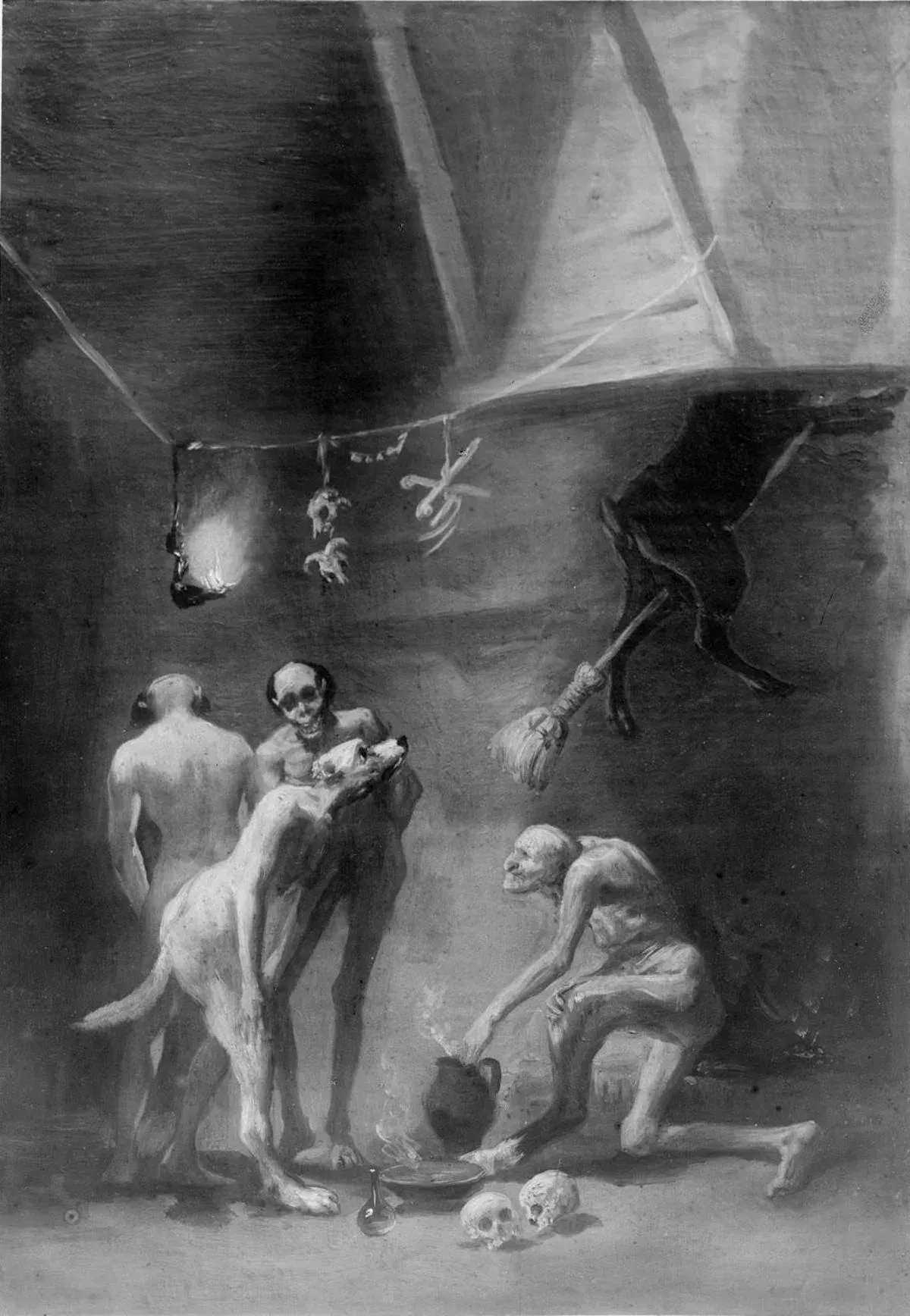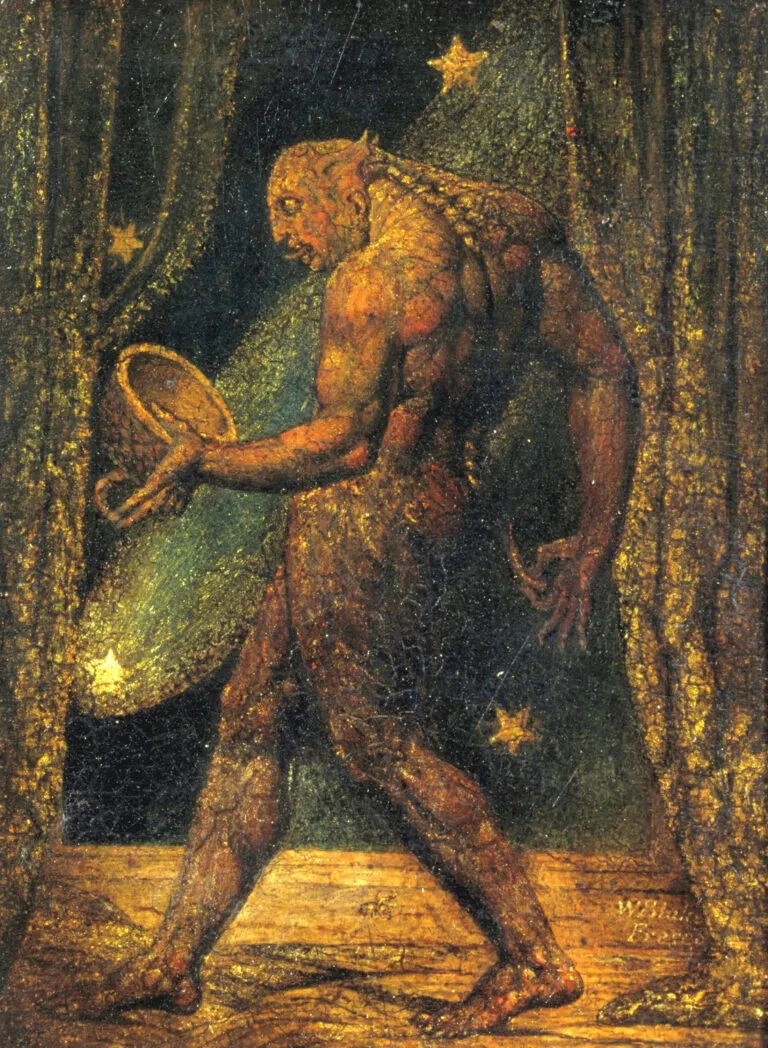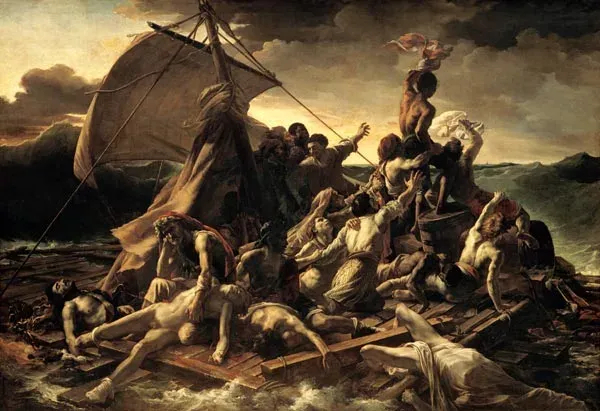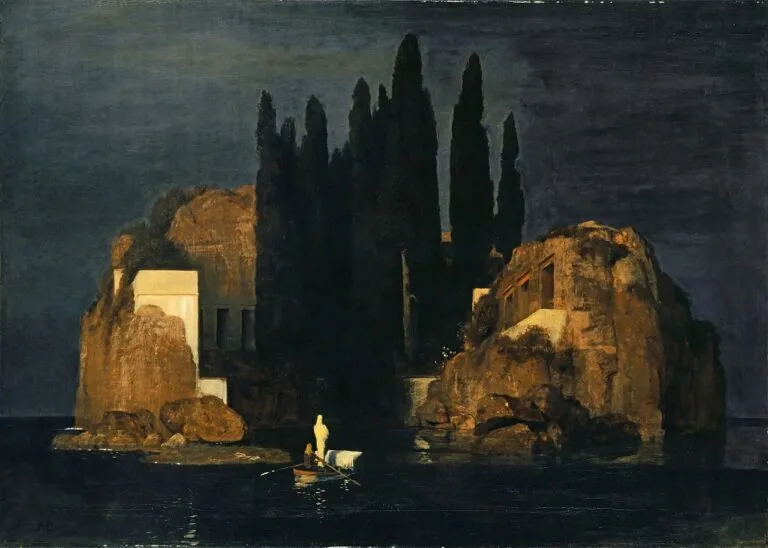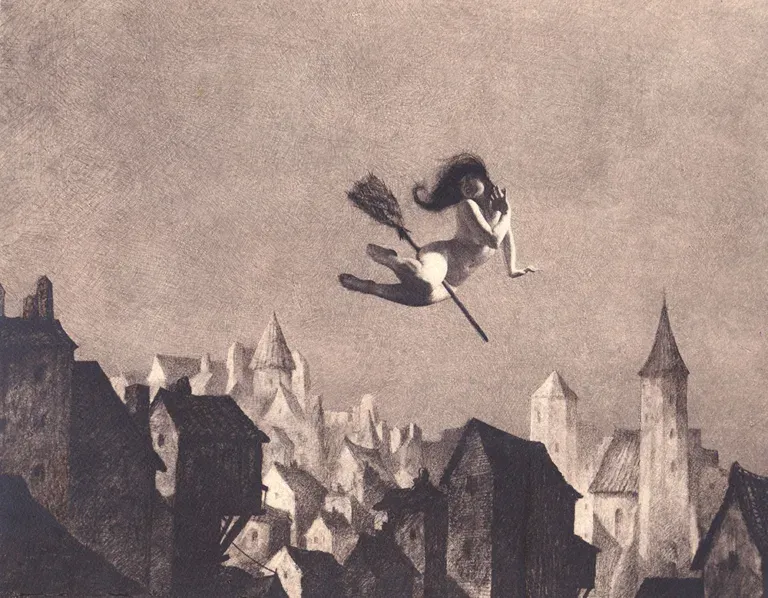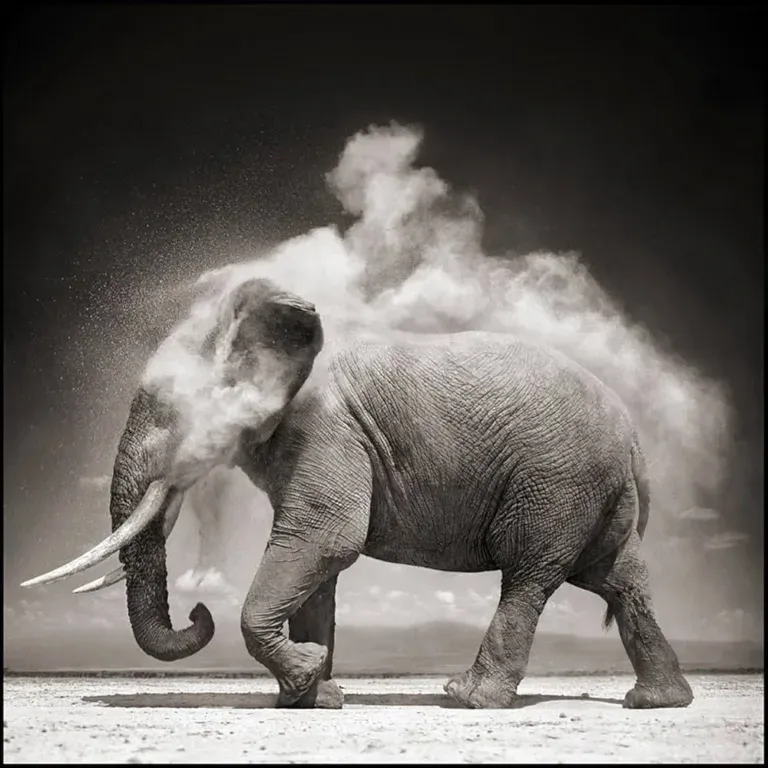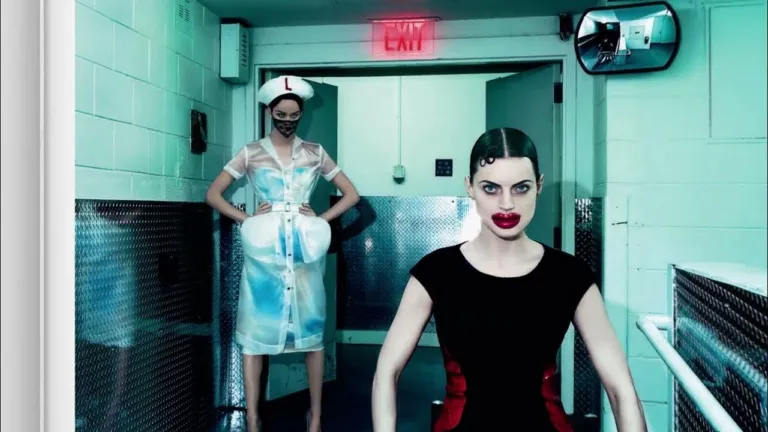The Witches’ Kitchen
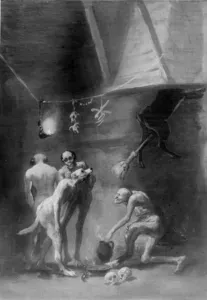
Our journey through the witchcraft of the master Francisco Goya continues with another of his unsettling paintings, The Witches’ Kitchen. This painting is based on one of the most famous witchcraft episodes in Spanish literature, inspired by Miguel de Cervantes’ novel, El casamiento engañoso.
Description of the Painting
The main characters are the dog Berganza and the witch Canizares. The dog is introduced to black magic by the witch, who is teaching him rituals to summon demons and create magical potions. On the lower right side of the composition, Canizares is kneeling with one leg resting on the floor and the other bent forward. Notably, the left leg has goat-like features, an element used by Goya to emphasize her demonic authority. Her left hand moves over the cauldron that divides the two halves of the composition, with two skulls visible nearby. The dog, which has the left leg and right arm of a human being, watches a goat flying on a broomstick through the chimney. The two figures behind Berganza were summoned by the witch and transformed into demons. Above them, bones, skulls, and an oil lamp illuminate the scene.
Interpretation
In The Witches’ Kitchen, we can again see the artist’s intent to critique certain forms of superstition of his time, which clashed with his Enlightenment spirit. In fact, the commission by the Dukes of Osuna aimed to stimulate more intellectual discussions with their friends who frequented their home.
The Color
Unfortunately, this painting is only known through a black-and-white photograph, as it is kept in a private collection in Mexico. Even with this photo, we can deduce that it is illuminated solely by the lantern above the figures on the left side of the composition and by the fire beneath the cauldron. The floor and central part, like the figures, remain clearly visible and lit, while the edges of the painting fade into darkness and gloom.
Conclusion
Goya always leaves us astonished and unsettled after viewing his dark and macabre works. In this one, in particular, it is clear how human imagination can alter our perception and our very concept of reality.
 Subscribe to our YouTube channel
Subscribe to our YouTube channel
